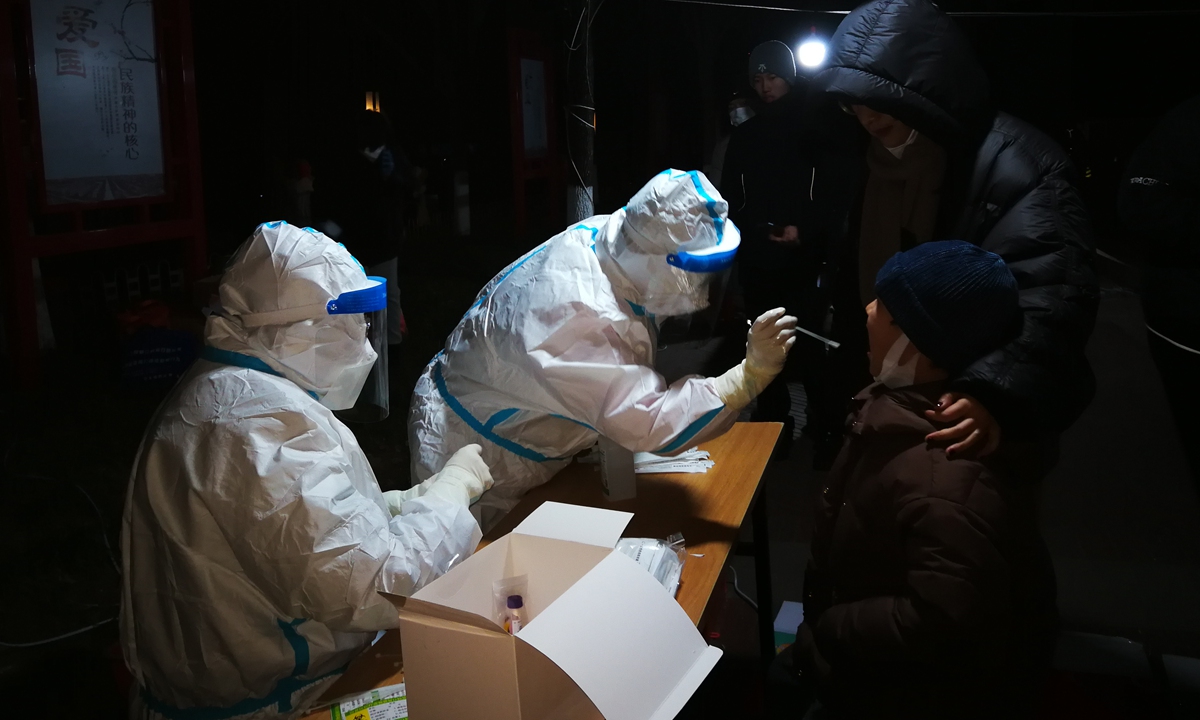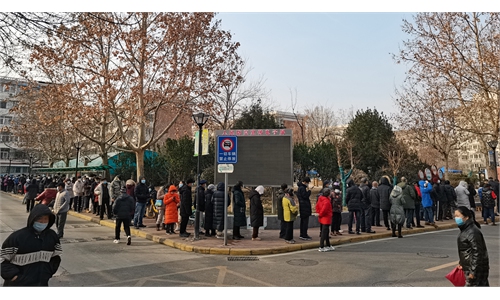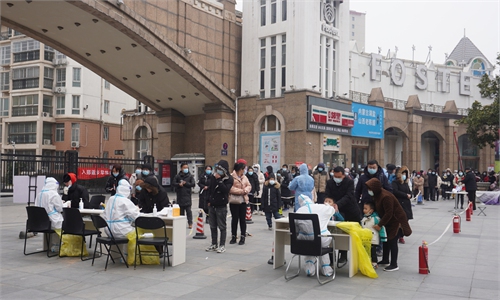COVID-19 infections in kids account for over half of cases in Tianjin Omicron-fueled outbreak

Residents take nucleic acid tests in Tianjin on January 9, 2022. Photo: VCG
The Omicron variant tends to infect children more easily, Chinese health experts said on Sunday, as more than half of the 40 COVID-19 cases in North China's Tianjin Municipality, a major gateway to the capital Beijing, host of the 2022 Olympics Winter Games, in less than a month, were middle and primary school students.
Tianjin announced on Sunday two locally transmitted cases involving the Omicron variant, which were identified on individuals who volunteered to be tested on Saturday. Other 18 cases were found in follow-up tests of high-risk groups. The Tianjin municipal government said the two cases were part of the same transmission chain but they are not linked with the imported Omicron case detected in the city in December 2021.
According to local health officials, 15 of the 20 confirmed cases are children aged between 8 and 13, concentrated in a childcare class which spread to three schools, China Newsweek reported.
The city reported another 20 cases on Sunday night with nine aged 15 and younger, bringing the total infections in kids to 24, which is more than half of the total number.
An anonymous Chinese virologist told China Newsweek that the situation in Tianjin is "worrisome," as the source of the sudden Omicron-fueled outbreak is yet unclear and the majority of those infected are children. "This is because Omicron affects children more compared to adults," the expert said.
He added that it is even more concerning as schools involved in the COVID-19 spike may present "explosive transmissions."
Official data on vaccination indicates that Tianjin has a full-course inoculation rate of 94 percent in people aged 12 and above. However, it does not show the vaccination rate for children under 12, while half of the current infected patients are aged under 10.
Children infected with previous variants of coronavirus tended to show mild symptoms and low risk, experts noted. However, the Omicron variant has infected more children, causing more acute symptoms and higher rate of hospitalization which makes the Tianjin outbreak more alerting, experts said.
For those unvaccinated kids who got infected, they may pass the virus to their parents or the elderly, which would pose more challenges.
Li Huanlong, chief physician at a district center for disease control in Hangzhou, East China's Zhejiang Province, said that there are now at least three generations infected with the virus spread, from staff of childcare centers to students and their parents, Chinese Newsweek reported.
"There may already exists a long transmission chain before the cases were found and we do not know to how many generations the virus has spread so far," Li said, noting that "the outbreak was identified quite late with the virus source of origin still unclear, and at least one or two rounds of massive COVID-19 testing are needed before we can make a clear judgment."
It is also worth noticing that Tianjin's population was traveling actively before the outbreak was reported on Sunday.
According to data released by Baidu Map, Beijing and some cities in North China's Hebei Province are the major destinations for Tianjin's personnel outflow.
Beijing ranked the first among all destinations from Tianjin in the past week. On Tuesday, 32 percent of all Tianjin's commuters travelled to Beijing, and 12 percent to Langfang in Hebei Province, a city close to the capital.


